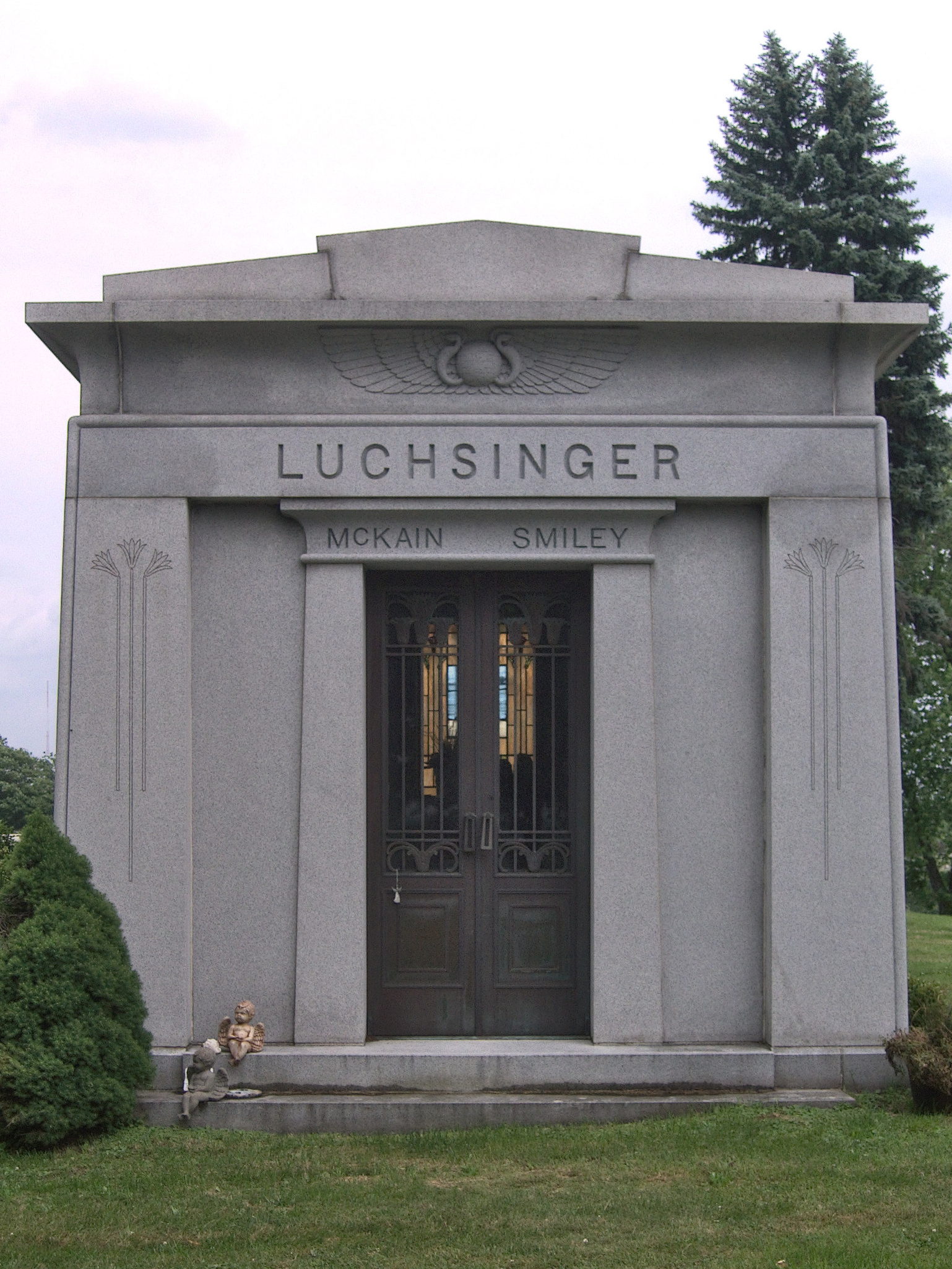This advertisement from an 1844 city directory shows us what was happening in the monument business in the rapidly growing Western city of Pittsburgh or Pittburg (it was just about equally likely to be spelled either way). Beginning in the 1830s, local stonecutters were displaced by a mechanized monument industry that produced much more professional-looking work—unfortunately in limestone (“marble” to the trade), so that the inscriptions erode much more quickly than the old craftsmen’s work in yellow sandstone.
-
Pittsburg Steam Marble Works
-
Illegible Monument, St. Clair Cemetery

Old Pa Pitt hates to throw up his hands and declare a monument “illegible.” It is especially frustrating with this monument, where on one side he can read almost everything but the last name—John something, who died August 16, 1847. That date seems about right for this style of monument, which was quite fashionably artistic for its time. On another face is an even more eroded inscription for someone whose given name was Lizzie, and another name that Father Pitt has not been able to decipher. Perhaps in different light the inscriptions will become clear, and Father Pitt promises to update this article if he succeeds in reading them.

-
Stanley Zaksesks Cross, St. Anne Parish Cemetery
-
Brown Pyramid, Homewood Cemetery

Probably the most photographed monument in the cemetery, this pyramid is festooned with Egyptian symbols—but, like most other pyramids in Pittsburgh cemeteries, it has the Roman proportions of the Pyramid of Cestius in Rome.


-
Luchsinger-McKain-Smiley Mausoleum, Rosemont, Mt. Hope, & Evergreen United Cemeteries




